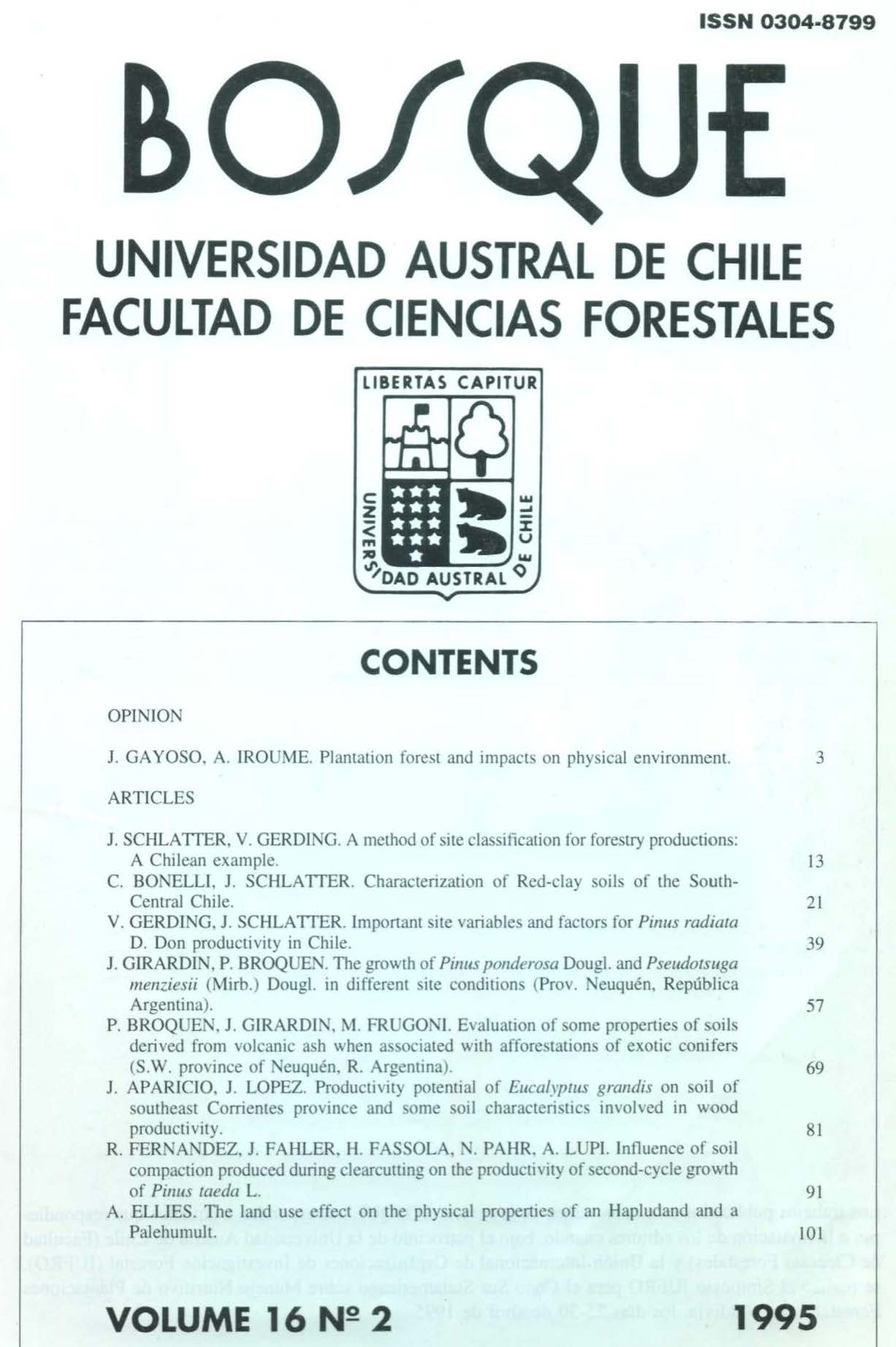Characterization of Red-clay soils of the South-Central Chile
Main Article Content
Abstract
Numerous studies have demonstrated the importance of soil characteristics in the development of forest plantations.
The objective of this study was to determine the variability in the morphological and physical properties of red-clay soils of the Collipulli series (an Andisol), as well as its limiting factors and fertility in various topographic positions.
Catenas that included outstanding morphologic units were used. Eight transects were selected, with a total of 18 soil profiles to determine soil morphological, physical, and chemical properties. The various topographic features included middle slope, upper slope, upper plain, lower plain, and depression.
The depth of soil development showed a wide range of variation, which was related to drainage and available soil water, characteristics directly associated with topographic position. Other soil characteristics also showed variation, although to a lesser extent, but did not show a clear relation to topographic position. Instead, they were the result of natural soil evolution or local anthropogenic effects. The fertility of these soils was a function of drainage and available water-holding capacity, which is associated with soil depth.
The soils were grouped according to their adaptability for various uses, depending on topographic position, depth of soil profile development, and drainage. As a result of these groupings, the following phases were recognized within the Collipulli series: depressions, plains soils (slopes <3%), soils with slopes from 3-5%, soils with slopes >5% (the upper and middle slopes). The classification of series into such phases allows for better soil management.

